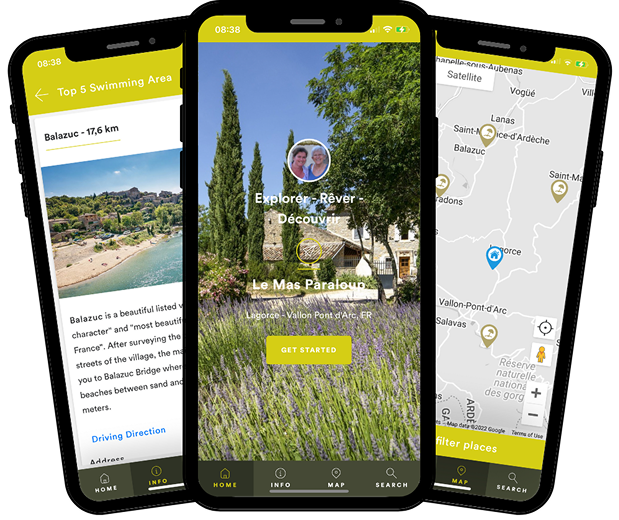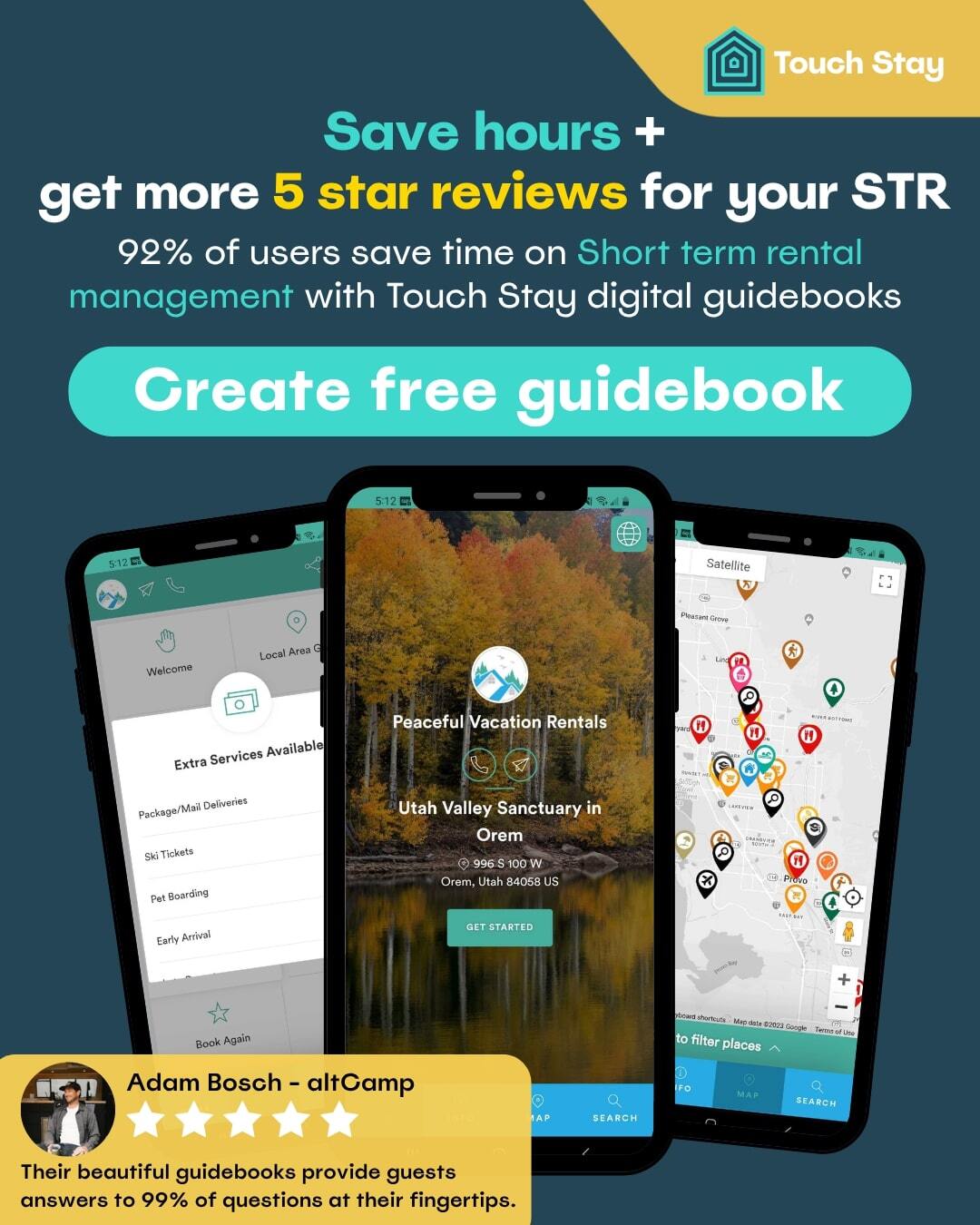As budget-conscious travellers, travel enthusiasts, and frequent flyers, we're always on the lookout for ways to maximise the value of our trips without sacrificing the overall experience. Enter shoulder season - the often-overlooked sweet spot between peak and off-peak travel times.
In this comprehensive guide, we'll explore what shoulder season is, when it occurs, the key benefits it offers, the best destinations to visit during these times, and practical tips to plan your shoulder season getaway. Read on to discover:
- What is shoulder season?
- When is shoulder season?
- Why travel during shoulder season?
- Best shoulder season destinations and experiences
- Shoulder season travel tips
- Shoulder season for hosts
What is shoulder season?
Shoulder season refers to the travel period that falls between a destination's peak and off-peak seasons. It's called "shoulder" season because it sits on the "shoulders" of the high and low seasons. During this time, destinations often experience a lull in tourism, leading to lower prices, fewer crowds, and more availability across flights, accommodations, and activities.
Unlike peak season, which is characterised by the highest demand and prices, shoulder season offers a more affordable and less crowded travel experience. Conversely, off-peak seasons typically have the lowest demand and prices, but may also come with less favourable weather or reduced business hours and operations.
The timing of shoulder season can vary significantly depending on the region, climate, and popular travel activities. For example, in many parts of the world, shoulder season occurs in the spring and fall, when the weather is still pleasant but crowds are smaller than during the summer high season.
When is shoulder season?
Shoulder season can occur at different times of the year, depending on the destination. Here's a closer look at typical shoulder season timelines across various regions:
North America
- Spring (April-May) and Fall (September-November)
- Examples: cherry blossom season in Washington, D.C. (Spring), leaf-peeping in New England (Fall)
Europe
- Spring (April-May) and Fall (September-October)
- Examples: fewer crowds in Rome and Paris (Spring), colourful landscapes in the Balkans (Fall)
Asia
- Spring (March-May) and Fall (September-November)
- Examples: mild weather in Japan during cherry blossom season (Spring), fewer tourists in Bali (Fall)
Oceania
- Spring (September-November) and Fall (March-May)
- Examples: fewer crowds in Australia's major cities (Spring), temperate weather in New Zealand (Fall)
It's important to note that shoulder season timing can vary widely depending on the specific destination, climate, and local tourism trends. Be sure to research the unique characteristics of your desired travel location to identify the best shoulder season opportunities.
Why travel during shoulder season? The benefits explained
Travelling during shoulder season can offer numerous advantages for budget-conscious travellers, travel enthusiasts, and frequent flyers. Let's explore the key benefits in detail:
Cost savings
One of the primary advantages of shoulder season travel is the significant cost savings. Flights, accommodations, and even activities and experiences can be substantially more affordable compared to peak season. Airlines and hotels often offer discounted rates to entice travellers during these slower periods, allowing you to stretch your budget further and potentially upgrade your trip. Additionally, using a VPN to get cheaper flights can help you find lower fares by accessing location-based pricing, as airlines may offer different rates depending on the region you're booking from.
Fewer crowds
Shoulder season is also known for significantly smaller crowds at popular tourist attractions, airports, and other high-traffic areas. Avoid the long lines, jostling for photos, and overall feeling of being part of a mass exodus of tourists. Instead, enjoy a more relaxed and personalised travel experience with easier access to the destinations you want to explore.
Mild weather
Many shoulder season destinations offer pleasant weather that strikes a balance between the extremes of peak and off-peak seasons. For example, spring and fall in Europe often provide mild temperatures, fewer rainy days, and comfortable conditions for outdoor activities and sightseeing. This can make for a more enjoyable and comfortable travel experience.
Sustainability
Choosing to travel during shoulder season can also contribute to more sustainable tourism practices. By visiting destinations during less crowded periods, you can help reduce the environmental impact and strain on local infrastructure that often occurs during peak seasons. This can include lower energy and water consumption, less waste generation, and a more even distribution of economic benefits for local communities.
Best shoulder season destinations and experiences
Shoulder season offers a wealth of opportunities to discover new destinations and unique experiences. Here are some of the top shoulder season destinations and the activities that thrive during these times:
North America
- New England (Fall): experience the stunning autumn foliage and crisp, comfortable weather.
- Washington, D.C. (Spring): explore the city's iconic landmarks and cherry blossoms without the summer crowds.
- Hawaii (Spring and Fall): enjoy whale watching, fewer tourists, and milder temperatures.
Europe
- Italy (Spring and Fall): explore cities like Rome, Florence, and Venice with fewer crowds and pleasant weather.
- Greece (Spring and Fall): discover the ancient ruins, islands, and coastal destinations with lower prices and smaller crowds.
- United Kingdom (Spring and Fall): witness the vibrant blooms of the English countryside or the changing leaves in the Scottish Highlands.
Asia
- Japan (Spring): witness the enchanting cherry blossom season and fewer tourists in major cities.
- Bali (Fall): experience the island's lush landscapes, cultural festivals, and relaxed atmosphere without the peak season hustle.
- Vietnam (Spring and Fall): explore the country's diverse landscapes, from the bustling cities to the serene coastal areas, with milder weather.
Oceania
- Australia (Spring and Fall): discover the country's iconic landmarks, like the Sydney Opera House and the Great Barrier Reef, with fewer crowds.
- New Zealand (Fall): immerse yourself in the stunning natural scenery, from the Southern Alps to the rolling green hills, with pleasant temperatures.
By carefully selecting your travel dates and destinations, you can unlock a wealth of shoulder season experiences that offer excellent value, fewer crowds, and opportunities to engage with local cultures in a more authentic way.
Shoulder season travel tips to maximise your experience
To make the most of your shoulder season getaway, consider the following practical tips:
Booking strategies
- Use flexible date searches on travel sites to find the best deals on flights and accommodations.
- Check for last-minute offers and packages that often emerge during shoulder season.
- Book early to secure the best rates and availability, as shoulder season can still be a popular time to travel.
Packing advice
- Pack layers and versatile clothing to accommodate the mild, transitional weather of shoulder season.
- Bring rain gear and light jackets, as shoulder season can still experience some precipitation.
- Research the typical weather patterns of your destination to ensure you're prepared for the conditions.
Planning around local events
- Research upcoming festivals, cultural events, or seasonal activities that may occur during your shoulder season visit.
- Incorporate these experiences into your itinerary to enhance your travel and immerse yourself in the local culture.
- Be mindful of event dates and book accommodations and activities well in advance, as shoulder season can still draw crowds for special events.
By following these tips, you can maximise the benefits of shoulder season travel and create a memorable, value-packed trip.
Shoulder season for hosts: how to maximise bookings and enhance the guest experience
While shoulder season is a hidden gem for travellers, it also presents unique opportunities and challenges for hosts. With fewer guests booking during these transitional months, hosts can use this time to refine their offerings, attract budget-conscious travellers, and set the stage for better reviews and repeat bookings.
Tips for hosts during shoulder season
- Adjust pricing strategies:
Offer competitive rates to attract cost-conscious travellers. Use dynamic pricing tools to align your rates with demand while keeping them enticing compared to peak season. - Promote off-season perks:
Highlight benefits like fewer crowds, mild weather, and special local events in your listing descriptions. Tailor your messaging to appeal to travellers looking for a quieter, more affordable getaway.
- Enhance guest communication:
Use this slower period to implement tools like Touch Stay digital guidebooks which streamline guest communication and provide a standout experience. These guidebooks let you share personalised recommendations, house rules, and even tips for enjoying your destination during shoulder season.
Example: a guidebook can highlight unique shoulder season activities, such as autumn hikes, spring festivals, or exclusive dining experiences only available during these months. This tailored approach not only improves the guest experience but also sets your property apart from competitors.
- Prepare for future bookings:
Use the downtime to refresh your property, update photos, and maintain your listing. Include shoulder season-specific imagery in your gallery to show potential guests what they can expect during their stay.
- Market to niche travellers:
Target business travellers, remote workers, or couples looking for off-season deals. Customise your guidebook content for these groups, such as including coworking spaces, quiet cafes, or romantic local spots.
Why Touch Stay guidebooks are essential for shoulder season
Shoulder season travellers often seek unique, off-the-beaten-path experiences. With a Touch Stay guidebook, you can:
- Highlight seasonal events and attractions
- Offer personalised recommendations that cater to off-peak visitors
- Reduce repetitive guest questions with an easy-to-access resource that covers everything from check-in details to local tips
Not only does this enhance the guest experience, but it also saves you time and boosts your reviews—crucial for maintaining your reputation during slower periods.
By leveraging tools like Touch Stay and optimising your hosting strategy, shoulder season can become a profitable and rewarding time for both you and your guests. Ready to elevate your hosting game?
Conclusion: is shoulder season right for you?
Shoulder season travel presents a compelling opportunity for budget-conscious travellers, travel enthusiasts, and frequent flyers alike. By taking advantage of the cost savings, fewer crowds, and mild weather, you can enjoy a more affordable and immersive travel experience without sacrificing the quality of your trip.
Whether you're captivated by the vibrant autumn foliage in New England, the enchanting cherry blossoms of Japan, or the lush landscapes of New Zealand, shoulder season offers a wealth of destinations and experiences to explore. By carefully researching your options and planning your trip, you can unlock the true potential of shoulder season and create a travel adventure that aligns with your values and budget.
So, if you're seeking a way to stretch your travel budget further, reduce your environmental impact, and enjoy unique experiences with fewer crowds, consider shoulder season as your next smart travel choice.
Shoulder season FAQs
Shoulder season can be an excellent choice for travellers who value cost savings, fewer crowds, and mild weather. While the specific benefits may vary by destination, shoulder season generally offers a more affordable and enjoyable travel experience compared to peak season.
When selecting a shoulder season destination, consider factors such as your interests, budget, and the typical weather during the shoulder season months. Research the unique characteristics of each destination to determine if the shoulder season offerings align with your travel goals.
Yes, travelling during shoulder season can result in significant cost savings. Flights, accommodations, and even activities are often substantially more affordable compared to peak season rates. By being flexible with your travel dates and taking advantage of deals, you can stretch your budget further and potentially upgrade your trip.
While shoulder season offers many benefits, there are a few potential downsides to consider. Some destinations may have reduced business hours or limited operations during the shoulder season. Additionally, the weather, while milder than peak season, may still be unpredictable, and some attractions or activities may be closed for maintenance or seasonal changes.

Ned
Ned has clocked up over 11 years in digital marketing and comms, with a strong focus on creating engaging content for a range of brands and agencies. When he’s not writing, he can be found digging for records, peering through his telescope at the night sky, or onboard his local lifeboat where he volunteers as a crewmember.
Be the first to know!
Join our newsletter for early access to:
- ✅ Free guides
- ✅ Pro tips & tricks
- ✅ Time saving tutorials
- ✅ Latest blog posts
- ✅ Checklists & templates



















